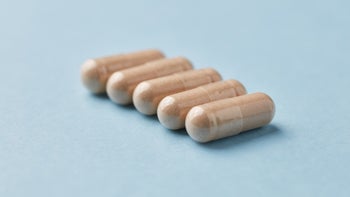
Sitz Baths: How to Use This Effective Home Remedy for Hemorrhoids, Anal Fissures, and More
Key takeaways:
Sitz baths are warm soaks for the area around your anus and genitals. They can treat a variety of common medical conditions, like hemorrhoids and postpartum discomfort.
Sitz baths help relax the skin and muscles in the anal area. This lets your body heal from pain and inflammation.
Healthcare professionals may recommend sitz baths when symptoms are bothering you. You can do a sitz bath several times a day.

Sitz baths might sound like something you would do at a fancy spa. But they’re actually a simple type of bath that you can do at home. The name comes from the German word for sit (“sitzen”). They help treat problems in and around your anus and bottom — like hemorrhoids, anal fissures, and postpartum discomfort.
Learn more about how to do a sitz bath, what conditions it can help with, and what the risks are.
What is a sitz bath?
Sitz baths are a soak for the perineal area — the area around your anus and genitals. Taking a sitz bath involves soaking this area in warm water. Healthcare professionals might recommend that you do them several times a day, usually for 10 to 20 minutes at a time.
Search and compare options
Sitz baths can be the main treatment or a supplemental treatment for conditions involving the vagina or anal region. They can help treat:
Abscesses (a collection of fluid or pus)
Bartholin’s cysts (a specific type of abscess near the vagina)
Pain or swelling from surgery
What are the benefits of a sitz bath?
Sitz baths have several benefits for your body. They can help the above conditions in a few specific ways. Let’s review how they work.
Improve blood flow
If you’ve ever soaked in a hot tub after a long day, you know how relaxing it can feel. Similarly, sitz baths help relax the skin and muscles around your genitals and anus. When the muscles relax, it allows better blood flow to this area. And better blood flow means faster healing and relief from pain.
This may be particularly helpful if you have hemorrhoids. A warm sitz bath can ease the pain by relaxing the anal sphincter (muscles around your anus). It can also make it easier to pass stool and relieve constipation.
Reduce itching
Some people add baking soda or Epsom salts to their sitz baths. In combination with warm water, this can help soothe irritated or itchy skin.
Benefits of hot baths: A warm bath can be a great way to unwind and relax. Learn more about this form of hydrotherapy.
Epsom salt baths: Learn about the benefits of Epsom salt baths, from muscle relaxation to stress relief.
What to do about itchy hemorrhoids: If you have hemorrhoids, you’ve likely tried a sitz bath to relieve the itch. Learn why hemorrhoids itch and what else you can do.
If you want to give this a try, first talk with a healthcare professional. This is because adding extra ingredients to a sitz bath might make some conditions worse. For example, these extra ingredients may worsen pain from cuts, anal fissures, and vaginal infections. And since the vaginal area should be slightly acidic, adding baking soda or other ingredients might upset the delicate pH balance there.
May help drain an infection
If you have a painful infection — like an abscess or infected cyst — you may get some relief by soaking in warm water. It’s possible that the warm water may help draw the infection to the surface. After several soaks, it might burst on its own and relieve the pressure underneath the skin. Many people are firm believers in this method, but there’s not much evidence to support it. It may be worth a try if you’re in the mood for a soothing soak though.
How do you make a sitz bath?
Making a sitz bath is easy. Most people can do it in a bathtub or basin. There are also commercial sitz bath tubs available at stores and on the internet.
Read more like this
Explore these related articles, suggested for readers like you.
Here’s how to do a sitz bath in five simple steps:
Find a quiet, comfortable place.
Fill your tub or basin with warm tap water.
Add baking soda or Epsom salts, if a healthcare professional gives you the OK. There’s no official recommendation on how much Epsom salt to use for a sitz bath. Many brands recommend using 1 to 2 cups to get the benefits.
Soak in the bath for 10 to 20 minutes.
Drain the tub or basin and wash it out with warm, soapy water.
You can repeat this three or four times daily and when your symptoms bother you.
Are there any risks to sitz baths?
Generally, sitz baths are considered to be very safe. There are two potential risks that are easy to avoid:
Burns: To avoid harming your skin, use warm but not scalding water.
Skin infection: Use fresh tap water and thoroughly wash your basin or tub before each bath.
When should you see a healthcare professional?
If you notice your condition is worsening even while using a sitz bath, connect with a healthcare professional. This is especially true if you have:
New fever or chills
Worsening pain
Worsening swelling
New or an increased amount of blood in your stool (poop)
Frequently asked questions
The idea of a sitz bath is to be able to soak the area around your anus and genitals. Some showers may be deep enough to allow you to comfortably soak. Just make sure to clean your shower before filling it for a soak.
A sitz bath can benefit many different medical conditions. But Epsom salts aren’t always a suitable addition to a sitz bath. Salt may irritate some cuts and infections. Make sure to talk with a healthcare professional before adding Epsom salt in a sitz bath.
A sitz bath can be a pleasantly simple experience. You don’t need to put anything in a sitz bath beyond warm tap water. In fact, it’s best not to add anything else unless a healthcare professional recommends it.
The bottom line
Sitz baths are an easy and effective home treatment for a variety of medical conditions. They can relieve many types of pain and irritation that occur in the sensitive areas around the vagina and anus. They can be used multiple times a day and are relatively low risk. Many people prefer this to medications, lotions, or creams. And they come with the bonus of a few extra minutes of rest and relaxation in your routine.
Why trust our experts?



References
Alnasser, A. R., et al. (2022). The efficacy of sitz baths as compared to lateral internal sphincterotomy in patients with anal fissures: A systematic review. Cureus.
Lawrence A., et al. (2023). External hemorrhoid. StatPearls.
Lykke, M. R., et al. (2021). Vaginal, cervical and uterine pH in women with normal and abnormal vaginal microbiota. Pathogens.





























